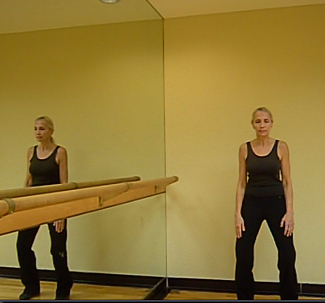MOTHER-DAUGHTER ANTI-COMMUNICATION AND HOW TO FIX IT (Issue 19)
by Diane Gold
 It is the difficult interaction between mothers and daughters that requires all the courage in the world. The way this mom and daughter are communicating can be classified as ANTI-COMMUNICATION. Not all families experience it. Most do. But there’s no mistaking it when it starts to break down and erase effective human interchange. Every word exchanged or action shared sets the other off.
It is the difficult interaction between mothers and daughters that requires all the courage in the world. The way this mom and daughter are communicating can be classified as ANTI-COMMUNICATION. Not all families experience it. Most do. But there’s no mistaking it when it starts to break down and erase effective human interchange. Every word exchanged or action shared sets the other off.
The cause is always internal to the individual, although it feels as if a razor gun is being pointed at us by the other person at the moment of deepest struggle. This very human tipping point occurs when neither the mom nor the daughter speaks to communicate. Each speaks at each other with anger, frustration, bravado, hurt, resentment, exhaustion, despair, disappointment, sadness. (Writing this brings back many memories of my speaking cruelly to my mom because of my own weaknesses. I don’t know how she handled it, other than that she was my mom and it was her job of love.)
True, the mom is the adult and authority and, according to one assessment, is the one who chooses whether to fix the situation or not. But this is often easier to say as an outsider that when it is happening in our lives right then and there.
Because there are so many people struggling with their daughters, I am going to include below an excerpt from my new consulting package.
Upon first glance, it looked as though the mom in our story is at her breaking point because she yells (or rages) instead of mediating in response to her daughter’s tantrums. But let’s take a closer look at why this is. This mom works 10-hour days, 6 or 7 days a week, has no support from and difficulty with other family members, has no health insurance which might help to pay for counseling, has other financial challenges which most of us have and is dealing with her daughter’s maturity, puberty and rebellious nature, common in the teen years.
The daughter has her school frustrations, issues with extra weight, also so common in puberty, fights with her sibling and is a latch key teen whose parents do not come home from work until 9 at night.
As one mom said when asked what she would do to help the communication between the mom and the daughter; she would sit down with the daughter and tell her what the rules are today. I agree with this. and believe that the rules that the mother wanted had not been clearly outlined to the daughter before the problems started. Now that the difficulties are here, clarification is one of the best strategies.
If the mother-daughter relationship is volatile, it is highly unlikely that the daughter will sit with the mother unless another program is brought in that is run by a third person. Eventually, the daughter will trust the mom again, especially when the mom shows that she will give up ultimate control, temporarily, for the sake of her daughter.
That’s where my step-by-step consulting program comes in.
The following information is an excerpt from Diane Gold’s Step-By-Step 24 Consulting. By reading this, we ask that you not take pieces of this program and use them. Either use the whole sequence or don’t use it at all. It is simple, involves a consultant or third person for accountability and accuracy and requires faith in self.
Furthermore, if you choose to read it, we ask that you not repost it. Also, please report how the experience goes by leaving comments using the feedback info below.
INITIAL MOTHER/DAUGHTER COMMITMENTS REQUIRED TO BEGIN
1) Both mom and daughter agree to include a consultant, middle person or mediator and no other person shall be present in a beginning consult. A professional with experience is preferred, even if it a volunteer.
2) Both mom and daughter agree to have this consult at a table outside the house or work, even if it’s in a public library or a beach picnic table. It is preferred that the table be 3 feet or more wide and 5 feet or more long.
3) Both mom and daughter agree to answer, honestly, questions about themselves.
4) Both mom and daughter decide whether to be recorded so that they can review their session, learn from it, remember it and pass it on to help others.
5) Mom and daughter agree not to discuss the specifics of this consult or anything about the program, itself, with any other family member or friend or school mate until directed to by the consultant, other than that she is involved in a special consulting or counseling program for a week. The reason for this is that not every family member or friend will agree with the technique, and the decision to go ahead with it should be the decision of the mom and the daughter. No one else. Therefore, no comments from anyone can be helpful at this point. And objections from others will be hurtful.
For those families who tell each other everything, I want you to think back to the time that you didn’t tell the family about the abdominal gas you experienced from the spicy food you ate last month. This will make you recognize that you don’t share everything and that there is a time and a place for optimal sharing. Once there is success, there will be time to share.
MOM & DAUGHTER FIX – ONE WEEK COMMITMENT WITH RIGHT TO QUIT IN ONE DAY
1) Mom and daughter commit to work very hard to let their interactions with other family members be separate from this very special interaction with each other. They will both do this by a hand shake or hug each morning or night.
2) Mom and daughter commit that for this one week, shorter or longer as decided by joint decision of mom and daughter, no added questions will be asked other than those written into the program.
3) When times get tough, mom and daughter will remember this is only a one week commitment with the right to quit at the end of the day. But during the day that is committed, follow the protocol.
HERE ARE THE RULES
1) No interaction is left to chance, so all rules must be followed. Everything is planned to result in specific, civil interaction with clear progressive outcome so that there are no misunderstandings and so that both people agree to and know the new rules.
2) Mom and daughter will carry matching notebooks with this printed information in it and a pen with which to write. Both will have them available at all times (not left in car or school). The notebook must be completely blank and unused to start. No exceptions.
3) Mom and daughter will refer to the rule page every time when interacting at the specific time of day or for the specific activity.
4) Mom will buy daughter an alarm clock if she doesn’t have a working or loud enough one, teach her to use it and watch her daughter demonstrate that it works.
5) Mom will give up the responsibility of waking her daughter and transfer it to her daughter. She will require her daughter to wake up on her own. If daughter does not get up on time, she will miss her breakfast which is scheduled at a specific time in 11) below or her bus or both. Mom’s (who have a car) will drive daughter to school only 1X a month for missing the bus because of getting up late.
6) Mom commits to her daughter, even though she doesn’t have to, that she will say please when she gives a command, to show respect to the daughter.
7) Daughter commits to her mom that she will acknowledge the command by saying, “I don’t like this, but I will do this for you, because you are my mom and I respect you.”
8) Mom and daughter will not yell for the week of the program. Each can dream about the end of the week when she can yell, if this helps. When/if one person makes a mistake and yells, the other will put up the index finger as a reminder of this commitment (vertical only, no pointing). The mom will accept this behavior from her daughter as part of the week of training and consider that it is not a disrespectful act. The one who is not yelling will ask the following questions of the one who is yelling. If both are yelling, use the 1-2-3 shoot method or the dice method in 16) below to determine who asks first.
a. What emotion are you feeling that made you yell?
b. How long ago in minutes did you start feeling it?
c. What was one good thing that happened in your day, today?
9) No blaming words will be used at any time. When one of you finds the other blaming, the one who is not blaming will raise the index finger as reminder described in 8) above and ask
a. What emotion are you feeling that made you use blame words?
b. How can I help?
and declare
c. I respect you.
10) Mom and daughter will not whine or complain during the course of the program. When either feels the need to do it, she shall write it down in her notebook with the date, time, feeling she is having and reason she thinks she is having it.
11) Breakfast will be served at ___ o’clock. Breakfast will be over at ____ o’clock (20 minutes later). These blanks are to be filled in by the mom. Daughter will be required to be at table at this time if she wishes to have breakfast. Mom will choose and prepare breakfast which will be cleaned up promptly at the closing time. No exceptions.
12) Lunch will be prepared by daughter the night before to take to school. No lunch money for this week. Having the daughter take responsibility for her lunch will get her to plan ahead and see the consequences of not doing it.
13) If Mom works late and daughter is home alone, mom will
a. call her daughter at 4 o’clock (or when daughter will be home from school) to ask
i. How the day went
ii. What homework she has.
iii. What future tests or work she has.
iv. Tell her she loves her and is happy they are working together.
v. Tell her what snack is available to eat.
b. Call her daughter at 6 o’clock when mom will ask daughter to make her lunch for the next day (so that daughter can help out financially by saving money, even if the family does not have a financial hardship), plan what she would like available for the next day’s dinner and ask her to eat dinner.
c. Mom will call daughter at 8 o’clock to see whether she has cleaned up after dinner and to see whether she has made her lunch.
14) Daughter will
a. Respond cheerfully when mom calls.
b. Wait for those 3 times to speak to mom, unless she has an emergency.
c. Ask mom how her day was.
15) Daughter is responsible to do her homework.
16) Mom and daughter will decide whether or not to continue this program for another day in step 15).
17) At end of day, mom and daughter will step outside or go into a basement, garage, park, quiet room to ask each other 2 questions and say 1 affirmation. Each will listen to the words of the other. No other questions may be asked about this process during this week.
a. What did I like about the way we spoke to each other today?
b. What did I learn about myself today?
c. I affirm that I am ready to work with you tomorrow.
The person who answers first will be determined by the 1-2-3 shoot method, extending 1 finger or 2. The daughter wins if the number is odd. The mom wins if the number of fingers is even. Or, if inside, roll the dice if you have real ones or go to: http://www.bgfl.org/bgfl/custom/resources_ftp/client_ftp/ks1/maths/dice/ and use the six sided ones.
18) If mom and daughter are finishing the 7th day, mom and daughter will decide together whether they wish to continue to week two.
CONCLUSION
When we are so entwined in getting through the day, we sometimes forget about respecting each other and sometimes take each other for granted. No matter how bad our mother-daughter situation is, we are family. It is our duty as parents to see the light at the end of the tunnel and to lead our daughters there. We would protect them with our lives against an attacker; we must also endure the pain of forming them and reforming them again in the harder struggle of day-to-day living.
I was extremely fortunate that my mother forgave everyone immediately if needed and started each day with a clean slate. I live this way because of her. I don’t know how she survived my difficult behavior, which was much worse than a lot I have seen. But she was a mom. And she championed through it for me. (Thanks, Ma.) She also reached out to a support structure of professions for help.
Part of the forgiveness that we may need includes listening to our children’s ideas and frustrations even though we are so tired that we think we will drop. It also includes setting up a structure for our children right now, if one has not been set up beforehand or if that one has fallen apart, so that our children have a framework from which to live. As much as kids like to be independent, they need a foundation from which to be independent.
Part of the forgiveness children need may come from seeing their parents as human beings. This is pretty hard before you are a parent.
As the above set of techniques indicates, one step at a time can do wonders. When we answer questions about ourselves, we are directing ourselves away from slanderous talk about the other in the relationship and allowing the other to get to know us. When we follow through on goals for a day at a time, we have a great chance of succeeding at them and, ultimately, learning new ways of relationship building.
There are many free services available in the United States for getting help. If you don’t have the time to find them, please contact me and I will try to help. Watch for the opening of StepByStep24.com, where you will be able to take advantage of our one week trial and our entire consulting package. It’s an excellent program that will allow you to feel in control, powerful and bonded with your daughter. Get ready for this package. We will help you with an advocate for the program, too. May the force of one step get you to the next.
_______

This piece is dedicated to my mom, Gertrude Gold Koplowitz, and to all the mothers and daughters out there who are having a hard time making sense of their relationship with each other. There are many ways we can get along with happiness. We just have to work together to find them.
FEEDBACK
Please leave your comments below and follow us on Twitter at WarriorsOWeight.
______
DIANE GOLD, AUTHOR
Diane Gold, Founder of Warriors of Weight, Moms For Healthy Daughters, is a mentor in tai chi, kung fu and meditation, a consultant in music and stress and a dedicated mom. She has seen untapped powers become available in the name of love. She says, “We must place our frustrations in a box outside the door and access our reserve strength in the name of helping and saving our daughters.”

 This movie is a call out to all of us to take notice and take action. We see the history of the school food industry, including how the government began offering food programs to assist our farmers. We hear about past and present financial struggle. We are exposed to complex relationships between food companies and politicians as well as government regulations that restrict all but the largest suppliers.
This movie is a call out to all of us to take notice and take action. We see the history of the school food industry, including how the government began offering food programs to assist our farmers. We hear about past and present financial struggle. We are exposed to complex relationships between food companies and politicians as well as government regulations that restrict all but the largest suppliers.


 Let’s picture a dam and what happens to the water. We stop the water from moving by placing a barrier up, the water is contained but its momentum builds up at the point of the dam. The same thing happens when we create silence by first removing noise from our mental and physical environments. We build up energy by not wasting it unnecessarily and by learning to focus it.
Let’s picture a dam and what happens to the water. We stop the water from moving by placing a barrier up, the water is contained but its momentum builds up at the point of the dam. The same thing happens when we create silence by first removing noise from our mental and physical environments. We build up energy by not wasting it unnecessarily and by learning to focus it. Let’s look at how beneficial it would be to plan silence for ourselves. We realize that we need to take periodic breaks. Do we realize these breaks are from the noise in our head from meaningless conversation or the noise at our place of work or school? It is no coincidence that there are thousands of retreat centers, a growing number of tai chi, yoga and meditation centers and more active attention on personal development training all over the world and tai chi and meditation in elementary schools. The growth of these quieting activities directly relates to the growing noise level in our everyday lives, be it from information overload online, local gossip or the 200 ads a day targeted at making us consumers of some 200 products that distract us from our one-pointed focus.
Let’s look at how beneficial it would be to plan silence for ourselves. We realize that we need to take periodic breaks. Do we realize these breaks are from the noise in our head from meaningless conversation or the noise at our place of work or school? It is no coincidence that there are thousands of retreat centers, a growing number of tai chi, yoga and meditation centers and more active attention on personal development training all over the world and tai chi and meditation in elementary schools. The growth of these quieting activities directly relates to the growing noise level in our everyday lives, be it from information overload online, local gossip or the 200 ads a day targeted at making us consumers of some 200 products that distract us from our one-pointed focus. Standing with our knees bent, butt tucked, feet shoulder width apart, shoulders over hips, facing away from the toilet; we can take 30 to 45 seconds to look straight ahead. The idea is to let the serenity of solitude allow the mind to be silent and regroup.
Standing with our knees bent, butt tucked, feet shoulder width apart, shoulders over hips, facing away from the toilet; we can take 30 to 45 seconds to look straight ahead. The idea is to let the serenity of solitude allow the mind to be silent and regroup. Most of us have a computer. If not, we have a book. We can choose a , there is a local museum or historical society. In most cases, we are welcome to go inside at no charge. We can spend time in this type of establishment doing the same exercise as above in order to create silence for ourselves. Most caretakers of history will be glad to have us as guests. So, it might be the perfect place that is rich in history and respects that history in glorious silence.
Most of us have a computer. If not, we have a book. We can choose a , there is a local museum or historical society. In most cases, we are welcome to go inside at no charge. We can spend time in this type of establishment doing the same exercise as above in order to create silence for ourselves. Most caretakers of history will be glad to have us as guests. So, it might be the perfect place that is rich in history and respects that history in glorious silence. One of the greatest distractions in our lives is the phone. We rarely turn it off.
One of the greatest distractions in our lives is the phone. We rarely turn it off. True phone story: Years ago, I recall saying no to my dad, Harry, when I was 13, when he asked me to go see The Guns Of Navaronne with him. I said no because I was waiting by the phone for one of the girls in my group to call and invite me to go downtown. The result of my having said no was that my father went to the movies on his own, the girls never called me which hurt my feelings, I hurt my father’s feelings and he passed before there was another movie opportunity (his photo left).
True phone story: Years ago, I recall saying no to my dad, Harry, when I was 13, when he asked me to go see The Guns Of Navaronne with him. I said no because I was waiting by the phone for one of the girls in my group to call and invite me to go downtown. The result of my having said no was that my father went to the movies on his own, the girls never called me which hurt my feelings, I hurt my father’s feelings and he passed before there was another movie opportunity (his photo left). Have you ever noticed that for many of our home services, like telephone, electric, tech support; we are on hold for lots of time? Those of us who cannot relate to this may be too young to have handled this type of call or may pay other people to make the calls.
Have you ever noticed that for many of our home services, like telephone, electric, tech support; we are on hold for lots of time? Those of us who cannot relate to this may be too young to have handled this type of call or may pay other people to make the calls. Our second action step is to go talk it out with someone, anyone. The power comes to us from changing our perspective and not dwelling on the words of some blockhead at school or work or in the street. If we don’t have an available friend, we can go to the library, the local food mart, the closest religious structure, the grocery store, the café. There are lots of people just waiting to listen to us. It will create more power when we approach them.
Our second action step is to go talk it out with someone, anyone. The power comes to us from changing our perspective and not dwelling on the words of some blockhead at school or work or in the street. If we don’t have an available friend, we can go to the library, the local food mart, the closest religious structure, the grocery store, the café. There are lots of people just waiting to listen to us. It will create more power when we approach them. M: Oh, absolutely. And that’s one of the secrets. I think that many parents feel that they’re somehow different because they have these emotions. And that their parenting must be different because it looks like other people handle everything fine. And everything is perfect in their family. And once you delve into what goes on, you realize that 99.9% of parents feel these kinds of emotions.
M: Oh, absolutely. And that’s one of the secrets. I think that many parents feel that they’re somehow different because they have these emotions. And that their parenting must be different because it looks like other people handle everything fine. And everything is perfect in their family. And once you delve into what goes on, you realize that 99.9% of parents feel these kinds of emotions. 3) RECOGNIZE ONE GOOD THING OUR DAUGHTER DOES FOR US
3) RECOGNIZE ONE GOOD THING OUR DAUGHTER DOES FOR US Picture a child screaming in a supermarket for a candy bar. Now put yourself in the place of the child’s parent. What are you thinking or feeling? If you are like almost half of the families we serve, you might be thinking what a catastrophe this is. You are becoming anxious and feel that all eyes are on you. You might also be feeling judged as a bad parent and can’t wait for this to stop. And because this seems to happen so often no matter what you try, you think that your child is just not capable of behaving. Despite your better judgment you decide to give your child the candy because you know the tantrum will end. Negative thoughts about your skills as a parent and perhaps about your child’s ability to improve seem to get in the way of good parenting skills—sometimes “giving in” just to keep the peace.
Picture a child screaming in a supermarket for a candy bar. Now put yourself in the place of the child’s parent. What are you thinking or feeling? If you are like almost half of the families we serve, you might be thinking what a catastrophe this is. You are becoming anxious and feel that all eyes are on you. You might also be feeling judged as a bad parent and can’t wait for this to stop. And because this seems to happen so often no matter what you try, you think that your child is just not capable of behaving. Despite your better judgment you decide to give your child the candy because you know the tantrum will end. Negative thoughts about your skills as a parent and perhaps about your child’s ability to improve seem to get in the way of good parenting skills—sometimes “giving in” just to keep the peace. Here we taught them to become aware of the interfering thoughts and taught them skills to either distract themselves (sometimes with humor) or perhaps substitute the negative thoughts with positive ones (“I have a plan for dealing with this tantrum and things will get better.”). They learned both how to help their child but also how to be more positive and hopeful in their application of these plans.
Here we taught them to become aware of the interfering thoughts and taught them skills to either distract themselves (sometimes with humor) or perhaps substitute the negative thoughts with positive ones (“I have a plan for dealing with this tantrum and things will get better.”). They learned both how to help their child but also how to be more positive and hopeful in their application of these plans. On the other hand, parents who received the optimism training did not concede to all of their child’s demands and persisted in getting their children to do things like put their toys away or get dressed without problems. Their optimism training helped them to keep it up and not concede.
On the other hand, parents who received the optimism training did not concede to all of their child’s demands and persisted in getting their children to do things like put their toys away or get dressed without problems. Their optimism training helped them to keep it up and not concede. It is the difficult interaction between mothers and daughters that requires all the courage in the world. The way this mom and daughter are communicating can be classified as ANTI-COMMUNICATION. Not all families experience it. Most do. But there’s no mistaking it when it starts to break down and erase effective human interchange. Every word exchanged or action shared sets the other off.
It is the difficult interaction between mothers and daughters that requires all the courage in the world. The way this mom and daughter are communicating can be classified as ANTI-COMMUNICATION. Not all families experience it. Most do. But there’s no mistaking it when it starts to break down and erase effective human interchange. Every word exchanged or action shared sets the other off.
 One of the greatest tools to put us in a state of readiness is tai chi. What is it, exactly? It’s a method of exercise that teaches us to be patient, prepared, precise and powerful at all times. It’s a mind/body program that gives us a place to begin. We build a foundation of understanding how to be stable on our journey, and time reinforces the lessons as long as we do a little movement.
One of the greatest tools to put us in a state of readiness is tai chi. What is it, exactly? It’s a method of exercise that teaches us to be patient, prepared, precise and powerful at all times. It’s a mind/body program that gives us a place to begin. We build a foundation of understanding how to be stable on our journey, and time reinforces the lessons as long as we do a little movement. Tai chi requires us to slow down and move like a wave in a giant ocean of water. If we imagine the lines in a profile of the ocean, we can see each line rolling into the next. This is analogous to each body system moving harmoniously with the other. Here is a graphic representation of this concept.
Tai chi requires us to slow down and move like a wave in a giant ocean of water. If we imagine the lines in a profile of the ocean, we can see each line rolling into the next. This is analogous to each body system moving harmoniously with the other. Here is a graphic representation of this concept. 1) Stand straight with legs as close together as possible.
1) Stand straight with legs as close together as possible. With TV, if we can’t fast forward past it, we wait for a commercial to be over to watch the rest of our program and, even though we are multi-tasking on our computer, phone, tablet during the commercial; some of the marketing message aimed at us about some mouth-watering food, bathed in high fat (that clogs arteries), oil devoid of the good stuff (essential fatty acids and antioxidants) and very processed sugar (which always contains high calories and, when processed, offers no nutritional value) reaches us and, the next day, we want this very item when we are at the mall, coming home from sports or school.
With TV, if we can’t fast forward past it, we wait for a commercial to be over to watch the rest of our program and, even though we are multi-tasking on our computer, phone, tablet during the commercial; some of the marketing message aimed at us about some mouth-watering food, bathed in high fat (that clogs arteries), oil devoid of the good stuff (essential fatty acids and antioxidants) and very processed sugar (which always contains high calories and, when processed, offers no nutritional value) reaches us and, the next day, we want this very item when we are at the mall, coming home from sports or school. Then there are the friendly fast food restaurants that have built a culture around our ignorance. We were pulled in by the special toys they give away and our belief that, if there are 5 major companies advertising sugar cereal for our kids, it must be good for them. Or if there are 6 major companies all competing for the burgers, fries and drinks market; they all must have studied the nutrition behind the food and it must be healthy and safe for us as consumers. After all, they all have salads, now, so that would make for a balanced meal. And the FDA wouldn’t allow them to be in business if their food was no good.
Then there are the friendly fast food restaurants that have built a culture around our ignorance. We were pulled in by the special toys they give away and our belief that, if there are 5 major companies advertising sugar cereal for our kids, it must be good for them. Or if there are 6 major companies all competing for the burgers, fries and drinks market; they all must have studied the nutrition behind the food and it must be healthy and safe for us as consumers. After all, they all have salads, now, so that would make for a balanced meal. And the FDA wouldn’t allow them to be in business if their food was no good. One way we measure our weight is by using the Body Mass Index. A great way to measure what this index defines is to feel whether or not we can pinch much excess skin around our body. If we can, we are probably carrying extra weight (which scientists have deemed is unhealthy for our organs, our body systems and emotionally), and we have just used a less clinical, simpler method of defining whether our body mass index is high. There are suggestions below as to what to do should we find this in ourselves. The result of this index is what people usually see when they look our way.
One way we measure our weight is by using the Body Mass Index. A great way to measure what this index defines is to feel whether or not we can pinch much excess skin around our body. If we can, we are probably carrying extra weight (which scientists have deemed is unhealthy for our organs, our body systems and emotionally), and we have just used a less clinical, simpler method of defining whether our body mass index is high. There are suggestions below as to what to do should we find this in ourselves. The result of this index is what people usually see when they look our way. Craving food is like any other urge. It is physiological, (1) sometimes set off by emotions which activate chemicals and (2) sometimes set off by chemicals which trigger emotions and reactions. We must become educated and sensitive to our situation, instead of taking the ostrich approach. What I mean is that we can feel great about ourselves with a little book knowledge and a little self-love. Knowledge truly gives us the power we need not to bury our heads in our pillow in hopelessness the same way as the ostrich in this graphic is burying his head in the sand. There is a prejudice about the ostrich from which this image comes. He does not bury his head in the sand. The male ostrich digs such a deep hole for the protection of the ostrich eggs [5-6 feet] that it looks as if his head is buried in the sand. It is not. To avoid making judgments without full awareness, we need to educate ourselves.
Craving food is like any other urge. It is physiological, (1) sometimes set off by emotions which activate chemicals and (2) sometimes set off by chemicals which trigger emotions and reactions. We must become educated and sensitive to our situation, instead of taking the ostrich approach. What I mean is that we can feel great about ourselves with a little book knowledge and a little self-love. Knowledge truly gives us the power we need not to bury our heads in our pillow in hopelessness the same way as the ostrich in this graphic is burying his head in the sand. There is a prejudice about the ostrich from which this image comes. He does not bury his head in the sand. The male ostrich digs such a deep hole for the protection of the ostrich eggs [5-6 feet] that it looks as if his head is buried in the sand. It is not. To avoid making judgments without full awareness, we need to educate ourselves. In my constant endeavor to understand what is going on in schools, it has been one of my big concerns to comprehend the lack of emphasis on nutrition in schools in this country.
In my constant endeavor to understand what is going on in schools, it has been one of my big concerns to comprehend the lack of emphasis on nutrition in schools in this country. The choice of food is also crucial. I once had a student who stopped at a well-known fast food drive through (which I won’t name to avoid any publicity!) every morning and wondered why her daughter was complaining of stomach ache every day and systematically missed the first class.
The choice of food is also crucial. I once had a student who stopped at a well-known fast food drive through (which I won’t name to avoid any publicity!) every morning and wondered why her daughter was complaining of stomach ache every day and systematically missed the first class. Worse still, very little is taught about practical, everyday nutrition. Yes, in biology class, students learn about the different food groups; they learn about carbs, fats and sugars…But kids are not taught to EAT the right way.
Worse still, very little is taught about practical, everyday nutrition. Yes, in biology class, students learn about the different food groups; they learn about carbs, fats and sugars…But kids are not taught to EAT the right way.





